
How To Do The Perfect Plank

Posted on 16 May, 2020

Planking (no, not that bizarre craze) is a simple but effective bodyweight exercise. Holding the body (light as a feather) stiff as a board develops strength primarily in the core—the muscles that connect the upper and lower body—as well as the shoulders, arms, and glutes.
This static exercise—meaning the body stays in one position for the entirety of the move—requires no equipment and can be performed just about anywhere (well, use your judgment). Find out how to perfect your plank and fix some of the most common planking mistakes with this guide.
Standard Plank
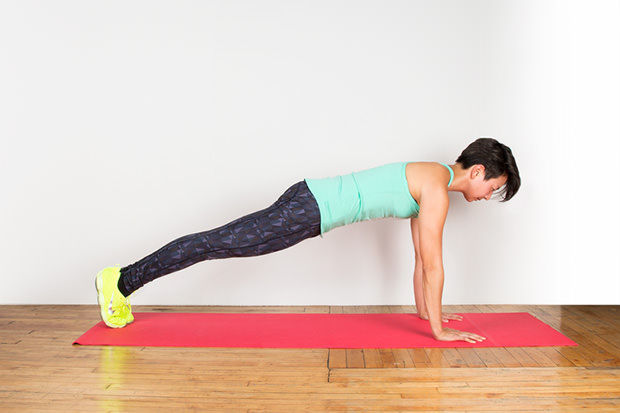
- Plant the hands directly under the shoulders (slightly wider than shoulder-width apart) like you’re about to do a push-up.
- Ground the toes into the floor and squeeze the glutes to stabilize the body. Your legs should be working in the move too; careful not to lock or hyperextend your knees.
- Neutralize the neck and spine by looking at a spot on the floor about a foot beyond the hands. Your head should be in line with your back.
- Hold the position for 20 seconds. As you get more comfortable with the move, hold your plank for as long as possible without compromising form or breath.
Forearm Plank
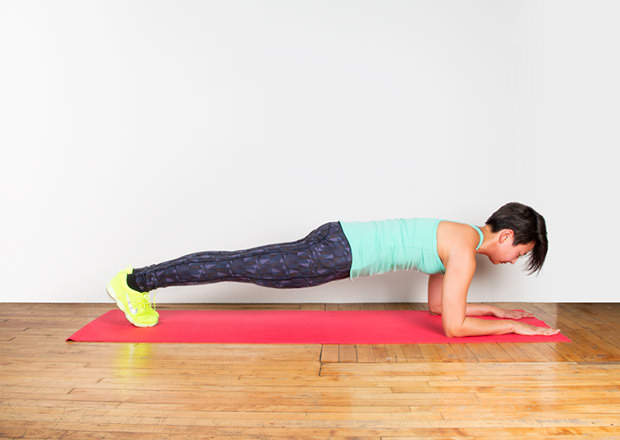
This variation, also one of the most common ways to perform a plank, is slightly easier than holding the body up with just the hands. Place the forearms on the ground with the elbows aligned below the shoulders, and arms parallel to the body at about shoulder-width distance. If flat palms bother your wrists, clasp your hands together. (Note: Any of the following plank variations can be performed with straight arms or in a forearm position.)
Knee Plank
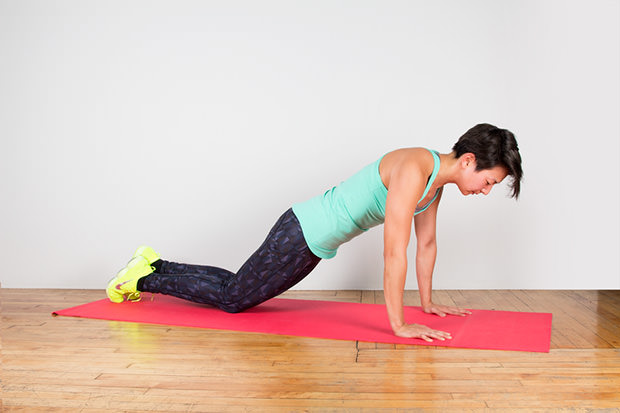
This plank is noticeably easier to hold than the traditional straight-arm plank, making it great for beginners becuase it allows them to concentrate on form. By resting the knees on the ground, there’s less stress on the lower back. Rest your knees on a rolled up mat or towel if they feel uncomfortable on the floor.
Side Plank
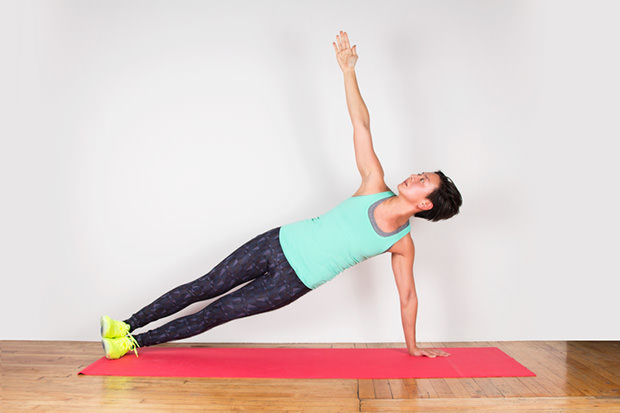
This variation better engages the obliques, or the side muscles of the core, than a standard plank. Lie on one side with the legs stacked on top of one another then prop the body up on the hand or elbow while keeping the feet stacked. Modify the position by raising the opposing arm or leg (or both!) in the air to make the plank more difficult, or make the move easier by crossing the upper leg in front of the body for additional support.
Single-Leg Plank
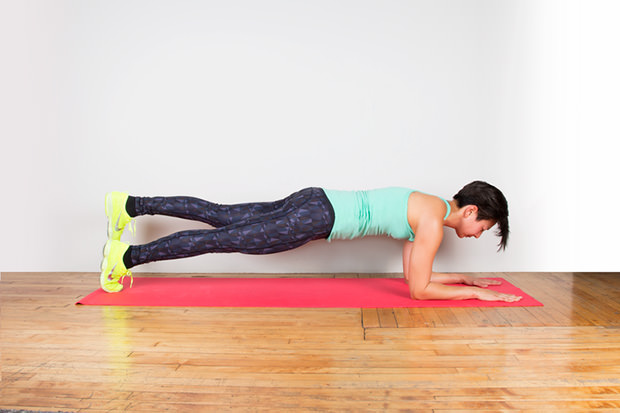
By removing one point of contact from the ground, this variation increases the demand on the core. Position the body into a basic plank, then lift one leg toward the ceiling (as far as feels comfortable, without compromising your back). Keep your hips parallel to the floor, then alternate legs.
Medicine-Ball Plank
Up the intensity by planting your hands on a medicine ball, rather than on the (much firmer, steadier) floor! Stabilizing the body on an unstable ball adds a balancing component to the move, increasing the demand on the core. Follow the same steps for a normal plank but instead place the hands or the forearms on the ball, directly under the shoulders.
How to Fix the 5 Most Common Planking Mistakes
The Mistake: Collapsing the lower back.
The Fix: Instead of compromising the lower back by dipping the bum, engage the core by imagining your belly button pulling in toward the spine. This will help keep the torso flat, and in turn, the spine safe. If you want to get super technical, have a friend gently place a broomstick or yardstick on your back—the top of the stick should make contact with the head, and the bottom of the stick should rest between the buttocks. The stick should also make contact right between the shoulder blades for proper alignment.
The Mistake: Reaching the butt to the sky.
The Fix: Planks aren’t supposed to look like a downward dog. To really get the core working the way it should in the plank position, keep your back flat enough so your abs feel engaged from top (right below the sternum) to bottom (directly below the belt). Just don’t dip the tush too far toward the ground.
The Mistake: Letting the Head Drop
The Fix: While the focus may be on keeping the hips, butt, and back in the proper position, form isn’t only about the core and the lower body in this move. It’s important to think of the head and neck as an extension of your back. Keep your eyes on the floor, letting them rest about a foot in front of the hands, which will help keep the neck in a neutral position.
The Mistake: Forgetting to breathe.
The Fix: It’s human nature to hold your breath when in a strenuous position for a period of time. But denying yourself oxygen can bring on dizziness or nausea, which are unpleasant at best and dangerous at worst.
The Mistake: Focusing too much on the stopwatch.
The Fix: Quality trumps the quanity of seconds ticking away when it comes to the plank. When your form begins to suffer, it’s time to call it quits. If the back begins to bow or the shoulders start to sink in, take a break.
Source: Greatist
Great Books On Isometrics To Consider


by John E. Peterson

by Erin O'Driscoll

by Anthony Anholt
 8 Ways To Speed Up Muscle Recovery
8 Ways To Speed Up Muscle Recovery Fitness Plan Derailed? Here's 20 Reasons To Get Back On Track
Fitness Plan Derailed? Here's 20 Reasons To Get Back On Track The Benefits Of High Intensity Interval Training
The Benefits Of High Intensity Interval Training How to Pick the Healthiest Bread
How to Pick the Healthiest Bread










